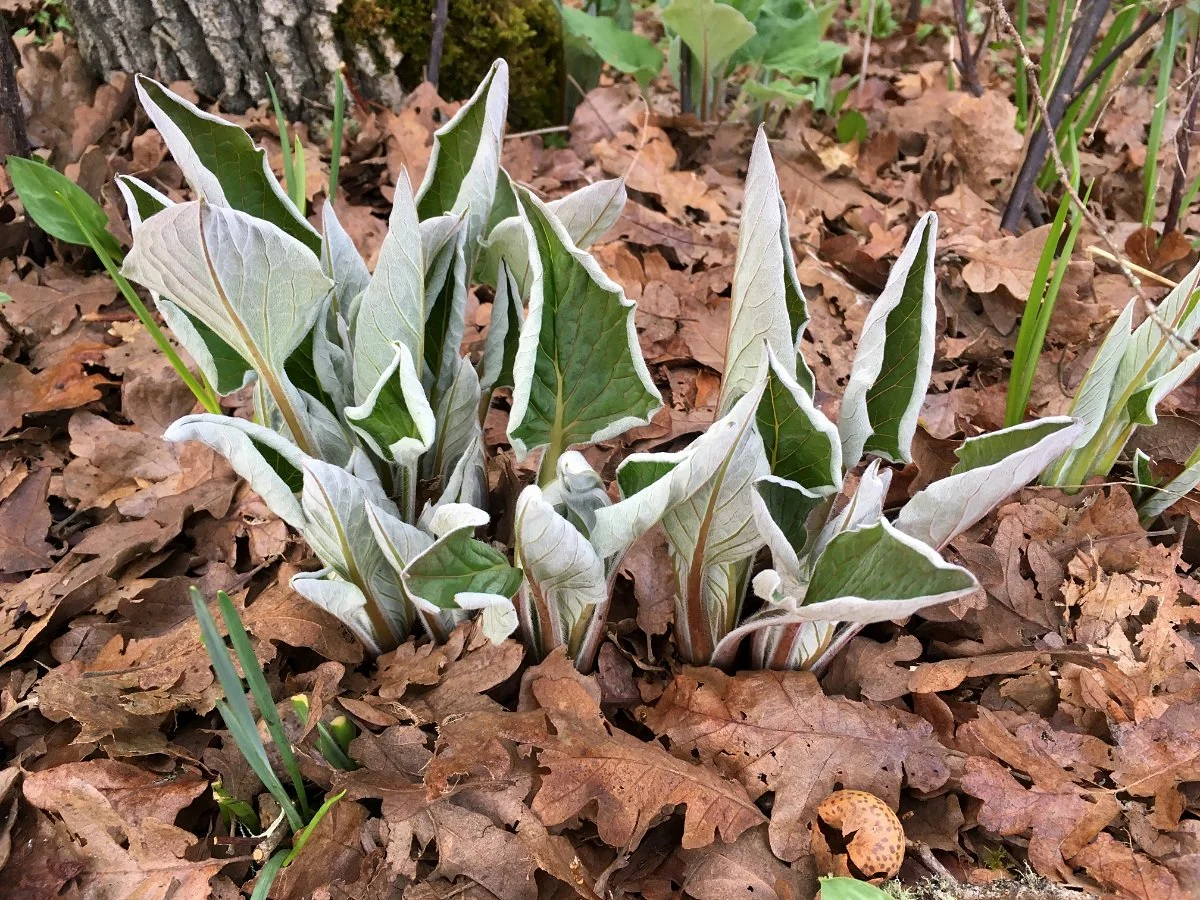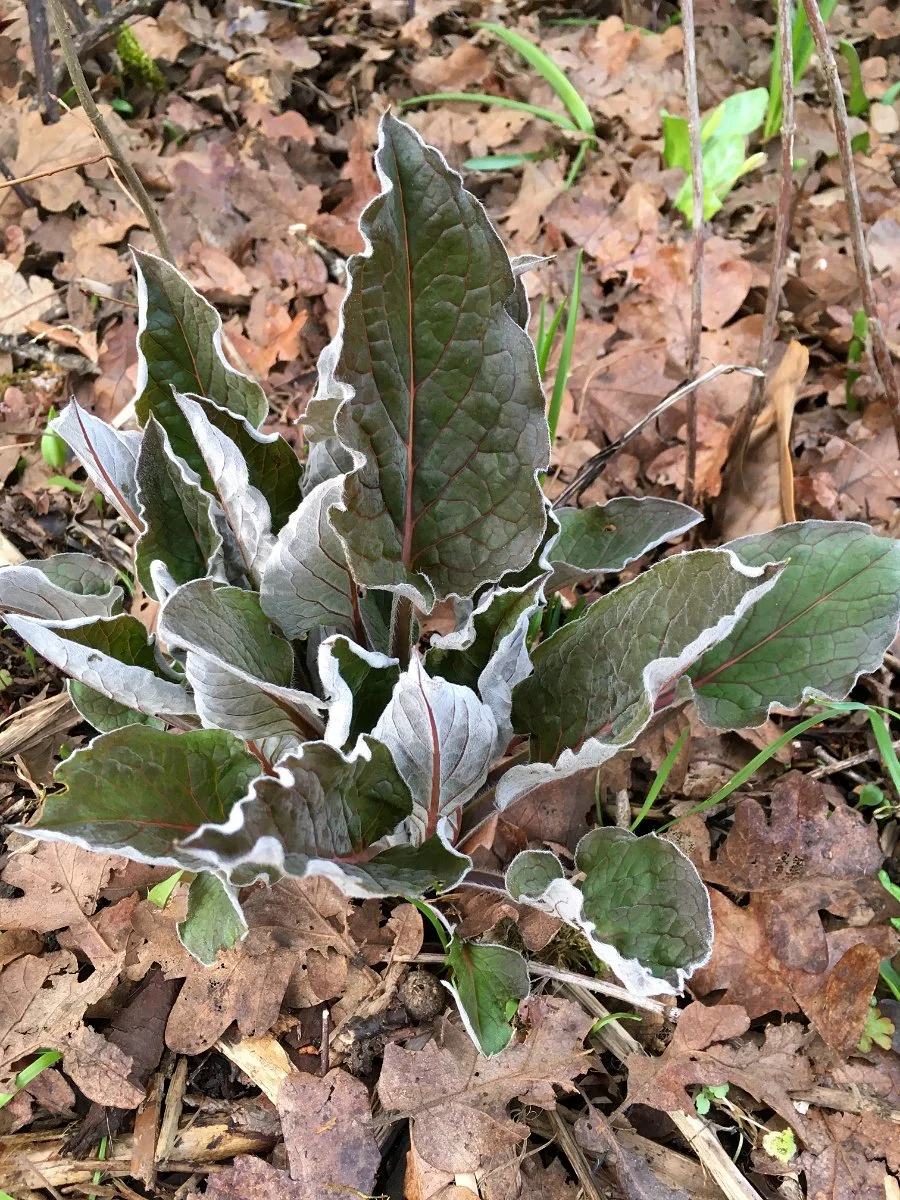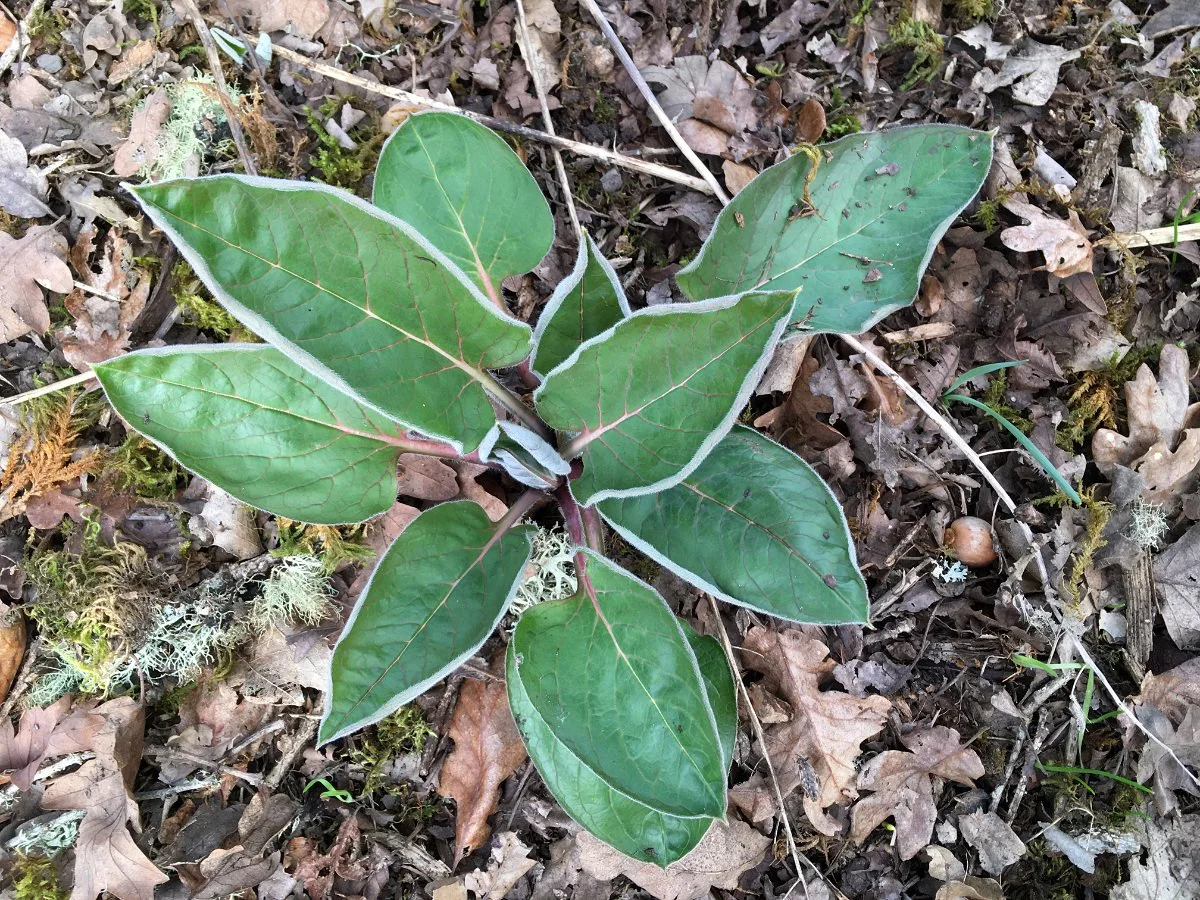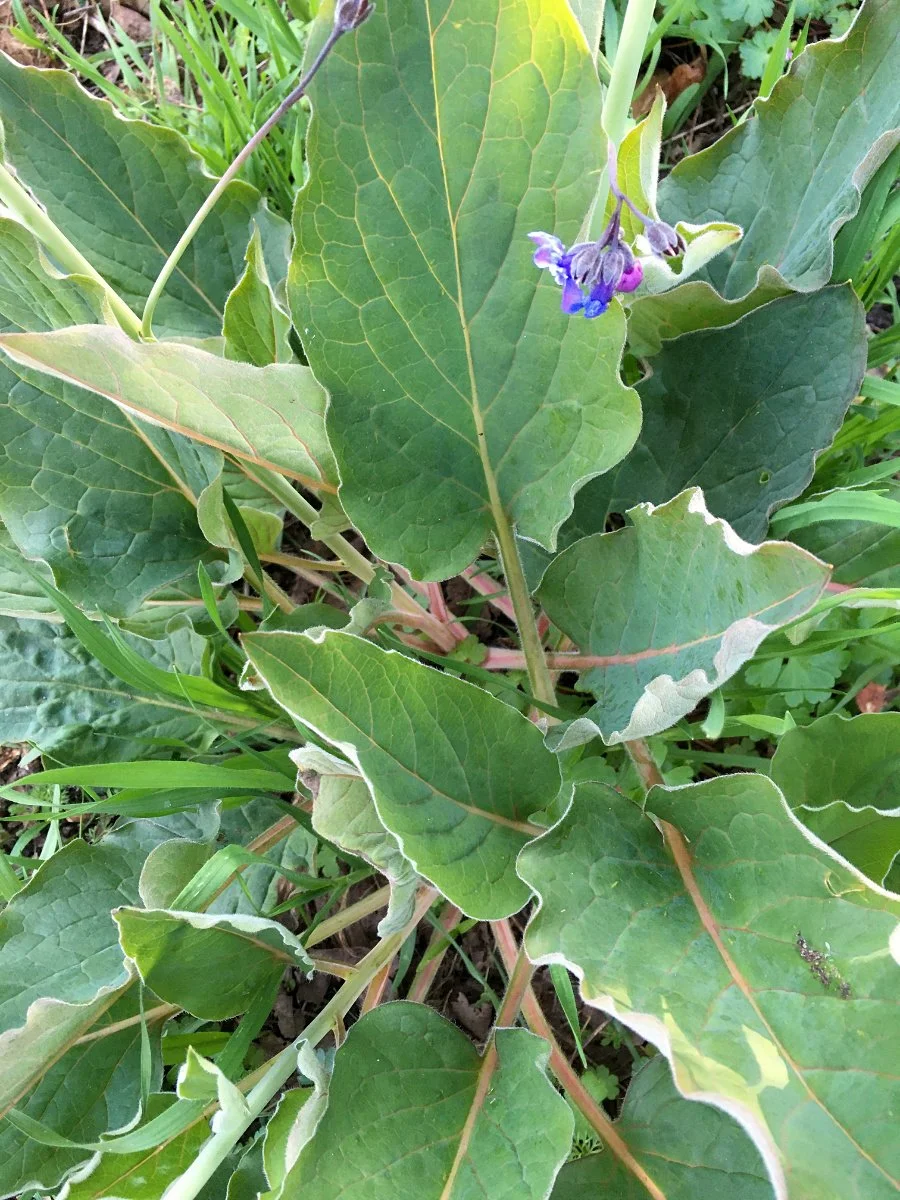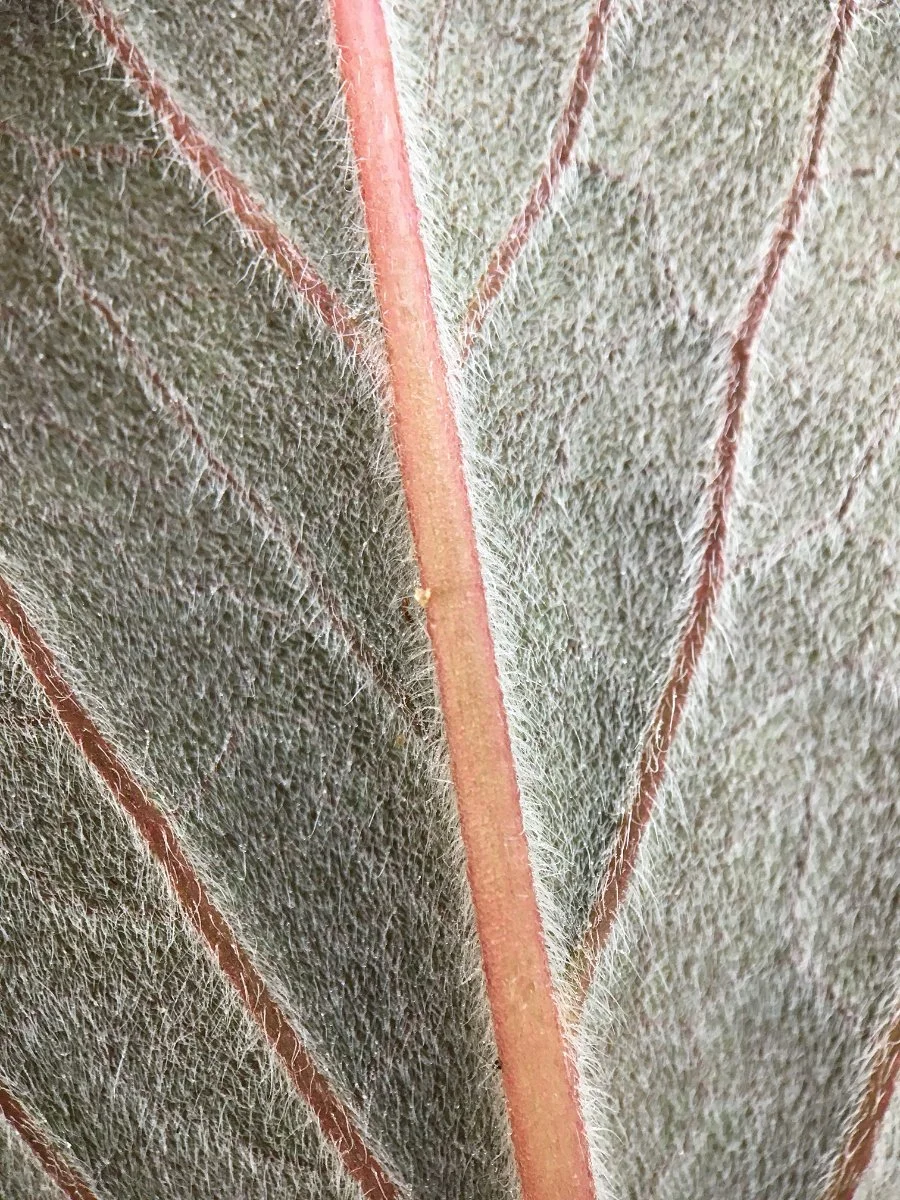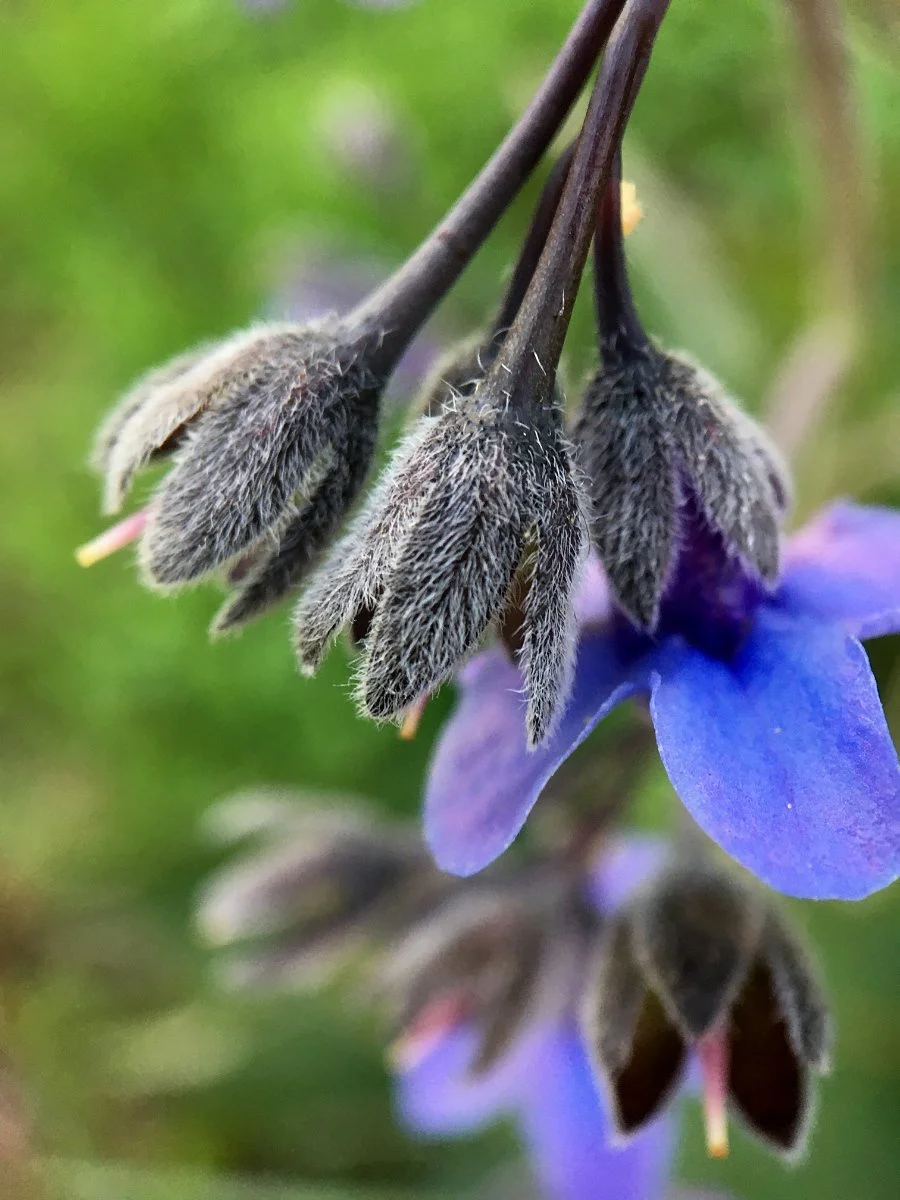Pacific Hound’s-Tongue (Cynoglossum grande)
Borage Family (Boraginaceae)
It is a perennial that is native to western North America. Cynoglossum is from the Greek cynos for ‘dog’ and glossa for ‘tongue.’ It grows in open forests at lower elevations from the Puget Trough through Columbia Gorge and Willamette Valley. At the Arboretum, this plant can be seen growing outside of the visitor’s center or in the wildflower garden on the river bank trail.
Leaves
Clusters of lance-shaped leaves break through the surface of the soil. At this point, the leaves are curled inward and only reveal the fuzzy underside that is covered in white hairs. They open into large, ovate (tongue-shaped), long-stalked leaves that have noticeable veins. They are basal leaves that grow near the base of the plant and are mostly confined to the lower half or third of the stem.
Flower
The flowers congregate in small panicles (loose branching clusters of flowers). They have 5 petals and resemble forget-me-nots. The colors are a watercolor wash of blues, violets, and pinks. In the center is a circle of white hearts that resemble miniature lockets. What magical keepsakes are held inside? The flower’s sepals are dark and covered in white hairs that resemble the stubble of an old man’s unshaven face.
Pollinators
This is one of the first blooms of spring and a favorite among hummingbirds. Bumblebees, mason bees, bee-flies, and honeybees love visiting this flower too.
Seeds
The seeds are small and round. They start off a light green and turn brown as they mature. They are covered in small bristles that probably serve in helping to cling to animal fir to help them be distributed. The nutlet has a thin shell, and I found what appeared to be tender leaves curled up inside.
Quick Reference:
Height: 1 - 2 feet.
Leaves: Basal, long-stalked, ovate
Flowers: Small, 5 petals, colors ranges from blue, violet to pink. Congregate in small panicles.
Habitat: Open forests in low elevations.
Journal Location:
Mt. Pisgah Arboretum
Mt. Pisgah Arboretum Plant List
Eugene, OR
References
“Cynoglossum Grande.” Sevenoaks Native Nursery, https://www.sevenoaksnativenursery.com/native-plants/perennials-and-bulbs/cynoglossum-grande/. Accessed 2 Apr. 2023.
Pojar, Jim, and Andy MacKinnon. Plants of the Pacific Northwest Coast: Washington, Oregon, British Columbia and Alaska (Revised). B.C. Ministry of Forests and Lone Pine Publishing, 1994.






